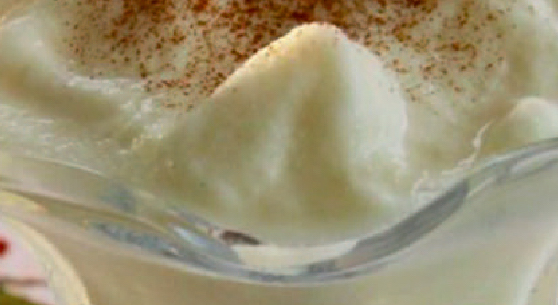Wound healing depends on many interrelating factors. Wounds penetrating internal body spaces like joints, sinuses, and the abdomen often result in infection of these structures, which can be life-threatening. Wounds that contain foreign bodies or even fragments of bone will not heal until that material is removed. It is critical to contact your veterinarian as soon as you notice a wound and get advice on whether it needs to be seen as an emergency or if it can wait. Wounds that can be sutured need to be cleaned thoroughly and closed as soon as possible. Wounds sutured over 12 hours after occurrence have a lower chance of healing. Ointments should be used cautiously and under direction of your veterinarian. Many actually retard healing or add complications to the clipping and cleaning of the wound. While waiting on your veterinarian, you should use water or dilute betadine (not iodine) to flush the wound and apply petroleum jelly under a compression bandage if feasible. Many horse owners feel they must do something. If that is the case, apply silver sulfadiazine or triple antibiotic after cleaning.
Wound healing depends on many interrelating factors. Wounds penetrating internal body spaces like joints, sinuses, and the abdomen often result in infection of these structures, which can be life threatening. Wounds that contain foreign bodies like wood, other foreign material, and even fragments of bone will not heal until that material is removed. It is critical to contact your veterinarian as soon as you notice a wound and get advice on whether it needs to be seen immediately as an emergency or if it is something that can wait. Wounds that can be sutured closed need to be cleaned thoroughly and closed as soon as possible. Wounds sutured over 12 hours after occurrence have a lower chance of healing than if sutured within the first 12 hours. Ointments should be used cautiously and under the direction of your veterinarian. While some have positive effects, many actually retard healing or add time and complications to the clipping and cleaning of the wound. While waiting on your veterinarian, you should use water or dilute betadine (not iodine) to flush the wound as thoroughly as possible and apply petroleum jelly under a compression bandage if feasible. Many horse owners feel they must do something. If that is the case, apply silver sulfadiazine or triple antibiotic after cleaning.

There are several important things to know about head wounds. The head has an excellent blood supply that helps with rapid healing, but there is little extra skin over the bones of the face. Thus, wounds with significant skin loss take a long time to heal. If there is skin loss involved in a new wound, a veterinarian may be able to save lots of healing time by repairing it, if the skin is still viable. Head wounds often result in loose flaps of skin. A veterinarian should repair these wounds as soon as possible. Suturing these wounds saves months of healing time and results in improved cosmetic appearance. Wounds near to or involving the eye require a veterinarian’s assessment immediately. Repair of eyelid lacerations is critical to the future function of the eye, as well as ensuring proper lacrimation.
As was discussed with head wounds, the critical question is whether the wound involves deeper structures or penetrates into the abdominal cavity. A wound that penetrates into the abdominal cavity or chest introduces life-threatening infection into the cavity and results in severe illness within hours. Whether or not body wounds are sutured depends on many factors, including location, age of wound, degree of contamination, and muscle damage.
Lower limb wounds can be potentially very serious. For the best outcome, any wound below the hock or carpus (knee) should be evaluated by an experienced veterinarian. Excessive movement, little loose tissue for contraction, and a poor blood supply in the lower limb result in difficult and slow wound healing.
Excellent veterinary management of these injuries from the beginning is the key to successful outcomes. Suturing of selected lower limb wounds is usually accompanied by careful bandaging or casting and long-term confinement. A properly applied cast can result in a quick, cosmetic and functional outcome in what otherwise would be a slow and difficult healing process.
Upper limb wounds generally heal rapidly. There is a better blood supply here than in the lower limb, which aids wound healing. The additional tissue mass means wound contraction can aid healing more than in the lower limb. Veterinarians sometimes choose to repair these wounds by suturing, but often recommend leaving the wound open to heal.
Contact your veterinarian, rather than Dr. Google, to get professional advice about any wound on your horse. You may save yourself some grief and potentially save your horse’s life.
There are several important things to know about head wounds. The head has an excellent blood supply, but there is little extra skin over the bones of the face. Thus, wounds with significant skin loss take a long time to heal. In a new wound, a veterinarian may save lots of healing time by repairing it, if the skin is still viable. Head wounds often result in loose flaps of skin. A veterinarian should repair these as soon as possible. Suturing saves months of healing time and results in improved cosmetic appearance. Wounds near or involving the eye require veterinarian assessment immediately. Repair of eyelid lacerations is critical to future function of the eye, as well as ensuring proper lacrimation.
As with head wounds, the critical question is whether the wound involves deeper structures or penetrates into the abdominal cavity. A wound that penetrates into the abdominal cavity or chest introduces life-threatening infection into the cavity and results in severe illness within hours. Whether or not body wounds are sutured depends on many factors, including location, age of wound, degree of contamination, and muscle damage.
Lower limb wounds can be potentially very serious. Excessive movement, little loose tissue for contraction, and a poor blood supply in the lower limb result in difficult and slow wound healing. Excellent veterinary management of these injuries from the beginning is key. Suturing of selected lower limb wounds is usually accompanied by careful bandaging or casting and long-term confinement. A properly applied cast can result in a quick, cosmetic and functional outcome in what otherwise would be a slow and difficult healing process.
Upper limb wounds generally heal rapidly. There is a better blood supply here, which aids wound healing. The additional tissue mass means wound contraction can aid healing more than in the lower limb. Veterinarians sometimes suture, but often recommend leaving the wound open to heal.
Contact your veterinarian, rather than Dr. Google, to get professional advice about any wound on your horse. You may save yourself some grief and potentially save your horse’s life.



